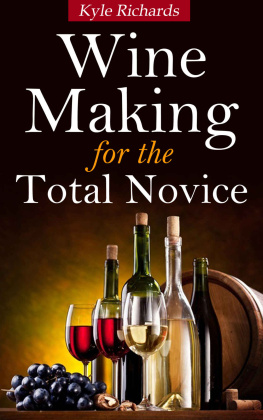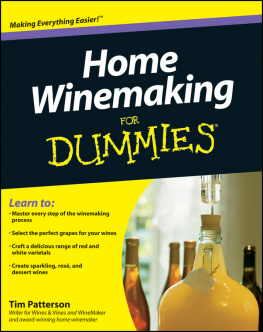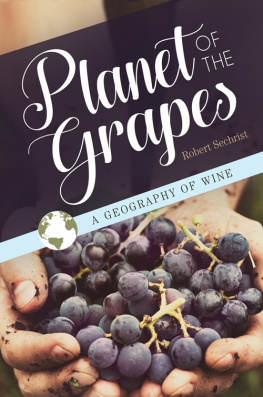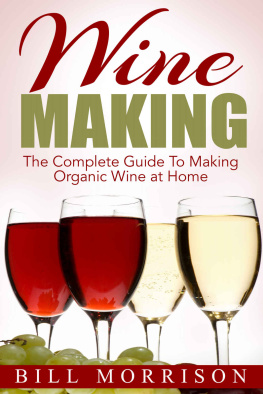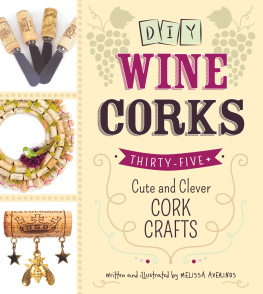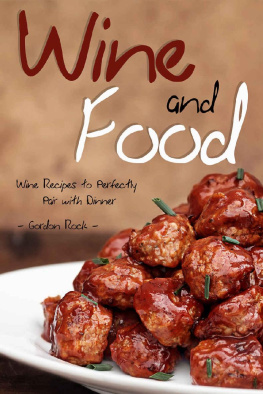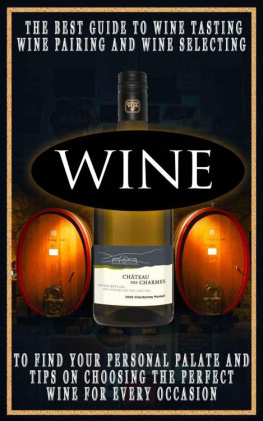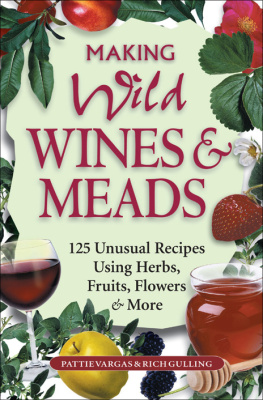Making Homemade Wine
Robert Cluett
The mission of Storey Publishing is to serve our customers by
publishing practical information that encourages
personal independence in harmony with the environment.
Cover design by Carol J. Jessop (Black Trout Design) and Jen Rork Illustrations by Sue Storey
1981 by Storey Publishing, LLC
All rights reserved. No part of this bulletin may be reproduced without written permission from the publisher, except by a reviewer who may quote brief passages or reproduce illustrations in a review with appropriate credits; nor may any part of this bulletin be reproduced, stored in a retrieval system, or transmitted in any form or by any means electronic, mechanical, photocopying, recording, or other without written permission from the publisher.
The information in this bulletin is true and complete to the best of our knowledge. All recommendations are made without guarantee on the part of the author or Storey Publishing. The author and publisher disclaim any liability in connection with the use of this information. For additional information please contact Storey Publishing, 210 MASS MoCA Way, North Adams, MA 01247.
Storey books and bulletins are available for special premium and promotional uses and for customized editions. For further information, please call 1-800-793-9396.
Printed in the United States by Excelsior
Cluett, Robert
Making homemade wine / by Robert Cluett
A Storey Publishing Bulletin, A-75
ISBN 978-0-88266-289-3
CONTENTS
Introduction
Wine is probably the most ancient and widespread alcoholic drink. It has been around at least several thousand years, as the literature of both the ancient Greeks and Hebrews tells us. Today, alcohol is available in a wide variety of forms: wines, beers, and distilled spirits. But it is wine that is the most popular with home brewers.
Wine is the easiest alcohol to make. It does not require the fastidious temperature control involved in brewing beer. Unlike distilled spirits, it requires no still and does not invite the curiosity of the revenue agents unless you undertake to sell the wine you produce, and we do not recommend doing that. You can make fine wines from grapes or other fruits, or you can make it from vegetables, grains, or flowers.
This bulletin will take the mystery out of making wine. We will teach you the language of winemakers and explain what ingredients and equipment are essential to the process. We will offer some reliable and delicious wine recipes, and we will tell you the cure and prevention of 11 common problems in case anything goes wrong with your wine. But we dont expect anything to go wrong. So, enjoy!
As with any specialty, winemaking has a language all its own. Before we go any further, let me introduce you to some of the terms you will come across in the text.
Champagning: The process of trapping carbonation into a still wine with a second, sealed ferment.
Cider: The customarily low-alcohol (6 to 9 percent) wine made from apples. Sometimes made sparkling, usually made still.
Fining: The removal of small-particle cloudiness from a wine.
Maderize: To cook a wine until it is like a Madeira. Wines stored at too high a temperature often will be said to be maderized.
Must: The dense liquid from which a wine begins. The point at which must stops being must and starts being wine is indefinite, but is generally conceded to be about SG (specific gravity) 1.030, or the point at which 60 percent of the sugar is converted into alcohol to give an alcoholic content of at least 7 percent.
Pearl: The carbon dioxide bubbles in a very slightly fermenting wine. Some wines, designed for a texture between champagne and still wine, are bottled when there is still a slight pearl in them.
Perry: Cider made from pears. See cider.
Plonk: A corruption of the French blanc, commonly used to denote a common white wine of French origin.
Rack: To siphon wine from one vessel to another.
Specific gravity: The density of a liquid as a fraction of the weight of water. A wine must with a lot of sugar in it will weigh between 8 percent and 12 percent more than water, hence will have a specific gravity (SG) of between 1.080 and 1.120. When these musts ferment out to the point where no sugar is left, they will give wines that weigh between 0.7 percent and 1.2 percent less than water (alcohol being lighter than water). The more alcoholic a finished dry wine is, the lower its SG.
Vinify: Literally, to turn to wine.
Equipment
You do not need much equipment to make wine at home. Many of the items listed here may already be in your home. The rest should be available at any store that sells winemaking equipment. If there are no such stores in your area, you can order equipment from the suppliers listed in the back of this bulletin.
Essential Items
These are the pieces of equipment you will need to get started in home winemaking.
Air locks: These let carbon dioxide gas out of the carboy and prevent air from getting in. Buy one for each carboy.
Carboys: Large glass vessels used as secondary fermenters. Carboys hold 5 gallons of liquid. You need an extra empty carboy to rack wine into, so buy one more carboy than you plan to make batches of wine.
Funnel: Buy a large one.
Hose and J-tube: For siphoning and keeping the siphon level above that of the dead yeast in the bottom of the vessel.
Hydrometer set: Includes a hydrometer to measure the sugar content in the must and a tall tube.
Nylon bag: Select a fine-mesh or medium-mesh bag, measuring 2 feet by 2 feet. It is used with a mallet to make a homemade juice extractor.
Plastic sheet: To cover the vat.
Spoon: A long-handled wooden spoon works best; but a plastic one is an acceptable substitute. Used for stirring the must.
Strainer: Any large kitchen sieve will do.
String: Take a string that is 4 inches less than the circumference of
your vat, and tie the ends to a 3-inch rubber band. Then you have an elastic tightener to hold the sheet on the vat.
Titration kit: Measures the acidity of the must.
Vat: You will need a large vessel, or vat, for the initial fermenting stage. I am partial to a 17-gallon garbage pail.
Helpful but Not Essential Items
Corker: For inserting corks in bottles.
Crown capper: Needed if you intend to make sparkling wines or ciders.
Crusher: Necessary for any large-scale operation that works directly from fresh fruit. It is not necessary for 10-gallon or 20-gallon batches. Crushers can be rented, but if you intend to go to press frequently you will probably want to own your own.
De-stemmer: For taking stems off fresh grapes. A large wooden spaghetti server makes an adequate substitute.
Filter and pump: These are used as a last-ditch method of clarification. I have used one once in 250 batches of homemade wine.
Gallon jugs: These are useful in the stage between carboy and bottle. Sometimes restaurants give them away.
Vinometer: Measures alcohol in wines that are fermented out and dry; it is not useful for wines with residual sugar in them.


